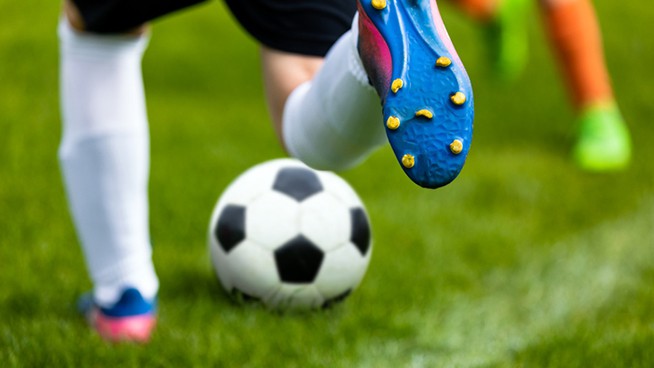3 Drills for a Better Freestyle Swimming Technique
![]()
Whether you’re just starting out in the pool or you’re an Olympic-calibre swimmer, the importance of excellent freestyle swimming technique in the water is absolutely critical. When you perform the fundamentals correctly, you are more efficient in the water, which translates to swimming faster with less effort.
Performing freestyle drills during your workouts is a great way to mix up your training in the pool and help you get back to mastering the basics of your freestyle swimming technique.
Here are three of my favorite drills for a faster front crawl:
Head-Up Dog Paddle
Dog Paddle might seem like a basic drill for faster swimming, but when done mindfully, it can be highly effective at correcting a couple of common technique mistakes. It helps you prevent crossing your hand over the center line, thus avoiding the fishtailing that is prevalent in many swimmers’ freestyle. It also promotes a high elbow position during the front half of your pull.
How to do it:
- Keep your elbow high through the beginning of the pull. As legendary Indiana coach Doc Counsilman used to say, imagine your arm rolling over the side of a barrel.
- Finish the pull with your hips.
- Use your flutter kick as you normally would.
- Breathe to the side like you normally would during freestyle; don’t pick up your head like in a traditional dog paddle.
Freestyle With Fly Kick
A common freestyle swimming technique error is the overglide. Overgliding, or overreaching during the catch phase of the pull, can be a real momentum killer, especially if your kick isn’t strong enough to power you through the glide. A great drill for helping you build a more evenly balanced stroke, and also help you nix that overglide, is the Fly Kick with freestyle arms.
It feels a little awkward at first, but once you get used to it, you will be surprised at how quickly you will be able to swim doing this drill. (If your Fly Kick leaves something to be desired, start by wearing fins.)
How to do it:
- Perform one fly kick as your hand enters the water. Doing one kick per stroke forces you to elevate your stroke rate and cut down on the glide.
- Imagine your arms like a kayak paddle—balanced and smooth as they turn over.
- Start by doing 25 yards or meters at a time and slowly build up.
Swimming With a Band
The most advanced of the three front crawl drills is a little tougher, but pound-for-pound is my favorite. It teaches you to keep a high elbow catch during your pull, elevate your stroke rate and balance your stroke while giving your shoulders a grueling workout.
For this drill, you need a rubber band that you can tighten around your ankles. When they pull with a pull buoy, most swimmers cheat by using their feet and legs to kick (even though they aren’t supposed to). Using a band has the benefit of removing the feet completely from the equation.
A warning, however: Do not do this drill if your technique isn’t solid or if you suffer from swimmer’s shoulder. Using a band is tough on the shoulders, so you should start out by doing no more than a length at a time. Think of it as resistance training for your stroke; and anytime you add resistance, you need to be particularly careful of form and technique.
How to do it:
- Strap a band around your ankles. If you struggle to complete a lap with just the band, add a pull buoy.
- Breathe bilaterally to develop power and good technical habits on both sides of your body.
- Start doing one lap at a time with plenty of rest; this drill is not easy and should always be done properly or not at all.
The Takeaway
Fast swimming isn’t just about crushing VO2 max and threshold sets. Like any other sport, it’s about being mindful of technique and form. Often simply being more attentive to your freestyle swimming technique can yield better results than blinding effort.
The next time you hit the pool for swim practice, add one or all of these drills to the mix and work your way toward a faster and more efficient freestyle.
READ MORE:
RECOMMENDED FOR YOU
MOST POPULAR
3 Drills for a Better Freestyle Swimming Technique
![]()
Whether you’re just starting out in the pool or you’re an Olympic-calibre swimmer, the importance of excellent freestyle swimming technique in the water is absolutely critical. When you perform the fundamentals correctly, you are more efficient in the water, which translates to swimming faster with less effort.
Performing freestyle drills during your workouts is a great way to mix up your training in the pool and help you get back to mastering the basics of your freestyle swimming technique.
Here are three of my favorite drills for a faster front crawl:
Head-Up Dog Paddle
Dog Paddle might seem like a basic drill for faster swimming, but when done mindfully, it can be highly effective at correcting a couple of common technique mistakes. It helps you prevent crossing your hand over the center line, thus avoiding the fishtailing that is prevalent in many swimmers’ freestyle. It also promotes a high elbow position during the front half of your pull.
How to do it:
- Keep your elbow high through the beginning of the pull. As legendary Indiana coach Doc Counsilman used to say, imagine your arm rolling over the side of a barrel.
- Finish the pull with your hips.
- Use your flutter kick as you normally would.
- Breathe to the side like you normally would during freestyle; don’t pick up your head like in a traditional dog paddle.
Freestyle With Fly Kick
A common freestyle swimming technique error is the overglide. Overgliding, or overreaching during the catch phase of the pull, can be a real momentum killer, especially if your kick isn’t strong enough to power you through the glide. A great drill for helping you build a more evenly balanced stroke, and also help you nix that overglide, is the Fly Kick with freestyle arms.
It feels a little awkward at first, but once you get used to it, you will be surprised at how quickly you will be able to swim doing this drill. (If your Fly Kick leaves something to be desired, start by wearing fins.)
How to do it:
- Perform one fly kick as your hand enters the water. Doing one kick per stroke forces you to elevate your stroke rate and cut down on the glide.
- Imagine your arms like a kayak paddle—balanced and smooth as they turn over.
- Start by doing 25 yards or meters at a time and slowly build up.
Swimming With a Band
The most advanced of the three front crawl drills is a little tougher, but pound-for-pound is my favorite. It teaches you to keep a high elbow catch during your pull, elevate your stroke rate and balance your stroke while giving your shoulders a grueling workout.
For this drill, you need a rubber band that you can tighten around your ankles. When they pull with a pull buoy, most swimmers cheat by using their feet and legs to kick (even though they aren’t supposed to). Using a band has the benefit of removing the feet completely from the equation.
A warning, however: Do not do this drill if your technique isn’t solid or if you suffer from swimmer’s shoulder. Using a band is tough on the shoulders, so you should start out by doing no more than a length at a time. Think of it as resistance training for your stroke; and anytime you add resistance, you need to be particularly careful of form and technique.
How to do it:
- Strap a band around your ankles. If you struggle to complete a lap with just the band, add a pull buoy.
- Breathe bilaterally to develop power and good technical habits on both sides of your body.
- Start doing one lap at a time with plenty of rest; this drill is not easy and should always be done properly or not at all.
The Takeaway
Fast swimming isn’t just about crushing VO2 max and threshold sets. Like any other sport, it’s about being mindful of technique and form. Often simply being more attentive to your freestyle swimming technique can yield better results than blinding effort.
The next time you hit the pool for swim practice, add one or all of these drills to the mix and work your way toward a faster and more efficient freestyle.
READ MORE:
[cf]skyword_tracking_tag[/cf]










